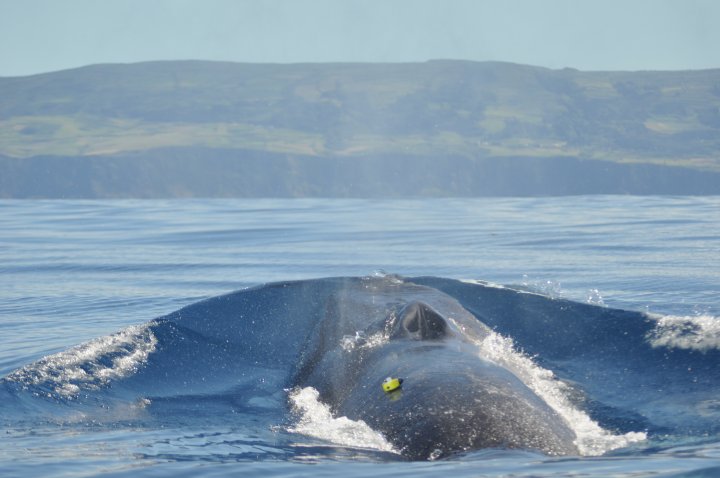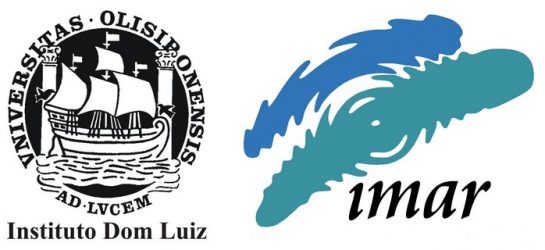Tarefa 2: Colocação de marcas acústicas (Dtags) nas baleias comuns
Deployment of animal-borne acoustic recording tags

The aim of this task is to sample the sounds produced by individual fin whales synchronously with their fine-scale movements over periods of 1-2 days, and to sex vocalizing whales. This will be done by instrumenting whales with a multi-sensor acoustic recording tag that incorporates 2 hydrophones, a depth sensor, and a 3-axis accelerometer, to obtain high-resolution data on their 3D movements and on the sounds produced and received by the tagged whale (Goldbogen et al., 2014), and by collecting biopsy samples of whales.
Boat trips will be conducted in the area used for visual-acoustic observations (Task 1) to collect biopsy samples of whales present and deploy the tags. Biopsy darts fired from a crossbow will collect skin samples to determine the gender of whales through molecular sexing. Tags will be delivered by a long pole and attached with suction-cups using protocols routinely used by IMAR. After releasing from the whale, tags will be recovered by following the signal of the VHF transmitter on the tag. Data will be processed using custom written routines on Matlab to analyse movement and acoustic data recorded. Movement data will then be used to infer the whale?s activity (foraging, travelling, resting) concurrently with their sounds. The outputs of this task will be used in Task 3 to estimate calling rates and investigate if and to what extent acoustic repertoire and vocal activity of whales is sexand behaviour-dependent and varies over diel cycles. Information on new calls produced by tagged whales will be passed to Task 4. Acoustic data from the tags will also provide measurements of the sound level of whale vocalizations, which will be used to calculate the detection range and source location of EAR and OBS under variable conditions (Task 6), as well as to obtain population density estimates from the sound level recorded in the frequency band of fin whale vocalizations (Task 6). 3D location will be developed in Task 5 and the vocalization depth obtained from the tags will provide the required calibration and validation data.
Expected results of this task are:
1) Successfully instrumentation of 20 fin whales with multi-sensor acoustic recording tags
2) Collection of biopsy samples from 70 fin whales
3) A comprehensive database of sounds with associated information on time, sex and behavioural activity of the individual
IMAR will collect biopsy samples and deploy the tags. IMAR and IDL will be involved in data processing and analysis. IMAR owns all equipment necessary to collect biopsy samples (crossbows, biopsy darts and tips). Costs include leasing one multi-sensor acoustic tag, 70 days (35 days in Years 1 and 2) of ship time for whale tagging and biopsying, laboratory consumables for sample preservation, outsourcing genetic analyses, and small consumables for tag preparation and maintenance. One Research Fellowship is needed to assist with fieldwork (collection of biopsy samples and tag deployment) and processing samples and tag data.

